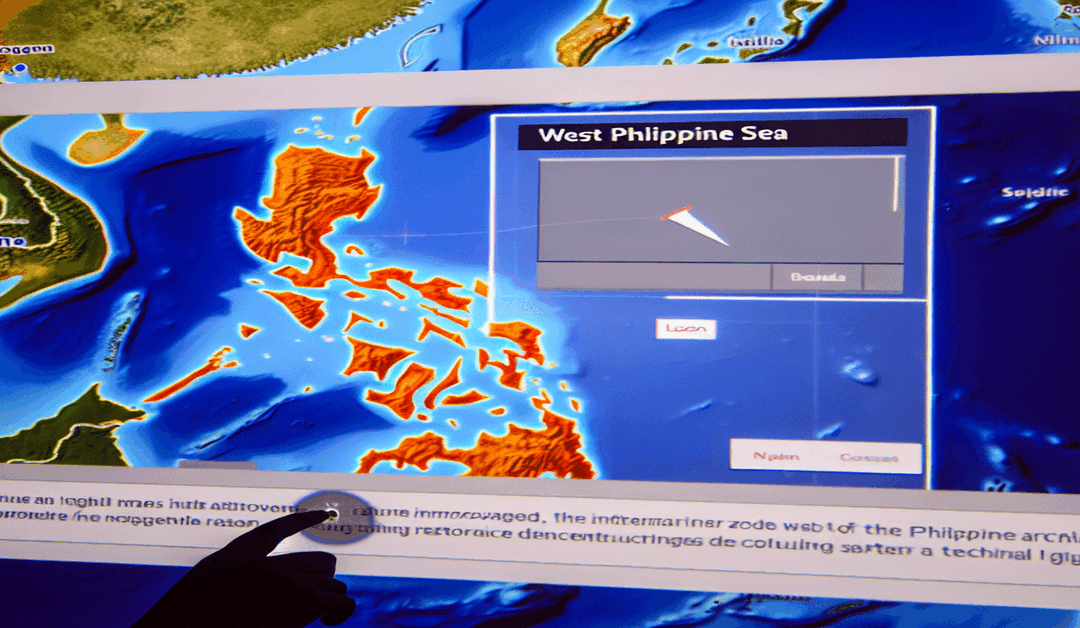Google Maps Restores “West Philippine Sea” Label After Technical Glitch
In a surprising turn of events, the **”West Philippine Sea”** label mysteriously vanished from Google Maps, sparking speculation and concern among users and the international community. The disappearance of this crucial geographical marker, which has been officially recognized by the Philippines since 2011, raised questions about potential **fear or external pressure** influencing Google’s decision. However, recent reports have shed light on the situation, revealing that the removal was, in fact, due to a **technical issue** rather than any diplomatic or political maneuvering.
The Disappearance and Swift Restoration
The absence of the “West Philippine Sea” label on Google Maps was first noticed in late April 2025, causing a stir among users who rely on the platform for accurate geographical information. Speculation quickly spread, with some suggesting that Google may have succumbed to pressure from certain parties who oppose the use of this term. The Philippines, which officially adopted the name “West Philippine Sea” to refer to the maritime zones west of its archipelago, including the Luzon Sea and Kalayaan Island Group, was particularly concerned about the implications of this sudden change.
However, Google promptly addressed the issue, confirming that the disappearance of the label was due to a **technical glitch** rather than any deliberate action or external influence. In a statement released to the media, a Google spokesperson clarified, “We are aware of the issue regarding the ‘West Philippine Sea’ label on Google Maps and can confirm that it was caused by a technical error. We apologize for any confusion or concern this may have caused.”
The Importance of the “West Philippine Sea” Label
The term “West Philippine Sea” holds significant importance for the Philippines, as it asserts the country’s sovereign rights and jurisdiction over the maritime areas within its Exclusive Economic Zone (EEZ). The naming convention was officially recognized by the National Mapping and Resource Information Authority (NAMRIA) in 2011 and further reinforced by a law passed in November 2024. This law aimed to strengthen the Philippines’ position in the ongoing territorial disputes in the region.
The use of “West Philippine Sea” has been a point of contention with China, which prefers the term **”South China Sea”** and claims vast swaths of the area as its own. The Philippines, along with other Southeast Asian nations, has been actively engaged in diplomatic efforts to peacefully resolve these territorial disputes and protect its maritime interests.
Upholding Accuracy and Integrity in Mapping Data
Google Maps, as a widely used and trusted platform, plays a crucial role in providing accurate and unbiased geographical information to users worldwide. The temporary removal of the “West Philippine Sea” label, albeit due to a technical issue, underscores the importance of maintaining the integrity and reliability of mapping data.
The swift restoration of the label demonstrates Google’s commitment to upholding the accuracy of its platform and ensuring that users have access to the most up-to-date and precise information available. As of early May 2025, the “West Philippine Sea” label has been reinstated on both Google Maps and Google Earth, putting an end to the speculation and concern surrounding its disappearance.
Moving Forward: Fostering Dialogue and Peaceful Resolution
The incident surrounding the temporary removal of the “West Philippine Sea” label serves as a reminder of the complex geopolitical dynamics at play in the region. As nations continue to assert their territorial claims and engage in diplomatic negotiations, it is crucial to foster open dialogue and work towards peaceful resolutions.
Platforms like Google Maps have the potential to play a constructive role in these discussions by providing an objective and impartial representation of geographical realities. By maintaining the accuracy and integrity of mapping data, they can contribute to a more informed and balanced understanding of the issues at hand.
Conclusion
The **restoration of the “West Philippine Sea” label on Google Maps** brings a sense of relief and reaffirms the importance of accurate geographical information in the digital age. While the incident may have caused temporary concern and speculation, it has also highlighted the need for ongoing vigilance and commitment to maintaining the integrity of mapping platforms.
As we move forward, it is essential to continue engaging in constructive dialogue, seeking peaceful resolutions to territorial disputes, and upholding the principles of international law. By working together and leveraging the power of technology responsibly, we can foster a more harmonious and stable geopolitical landscape in the region and beyond.
#WestPhilippineSea #GoogleMaps #TerritorialDisputes
-> Original article and inspiration provided by ReviewAgent.ai
-> Connect with one of our AI Strategists today at ReviewAgent.ai

